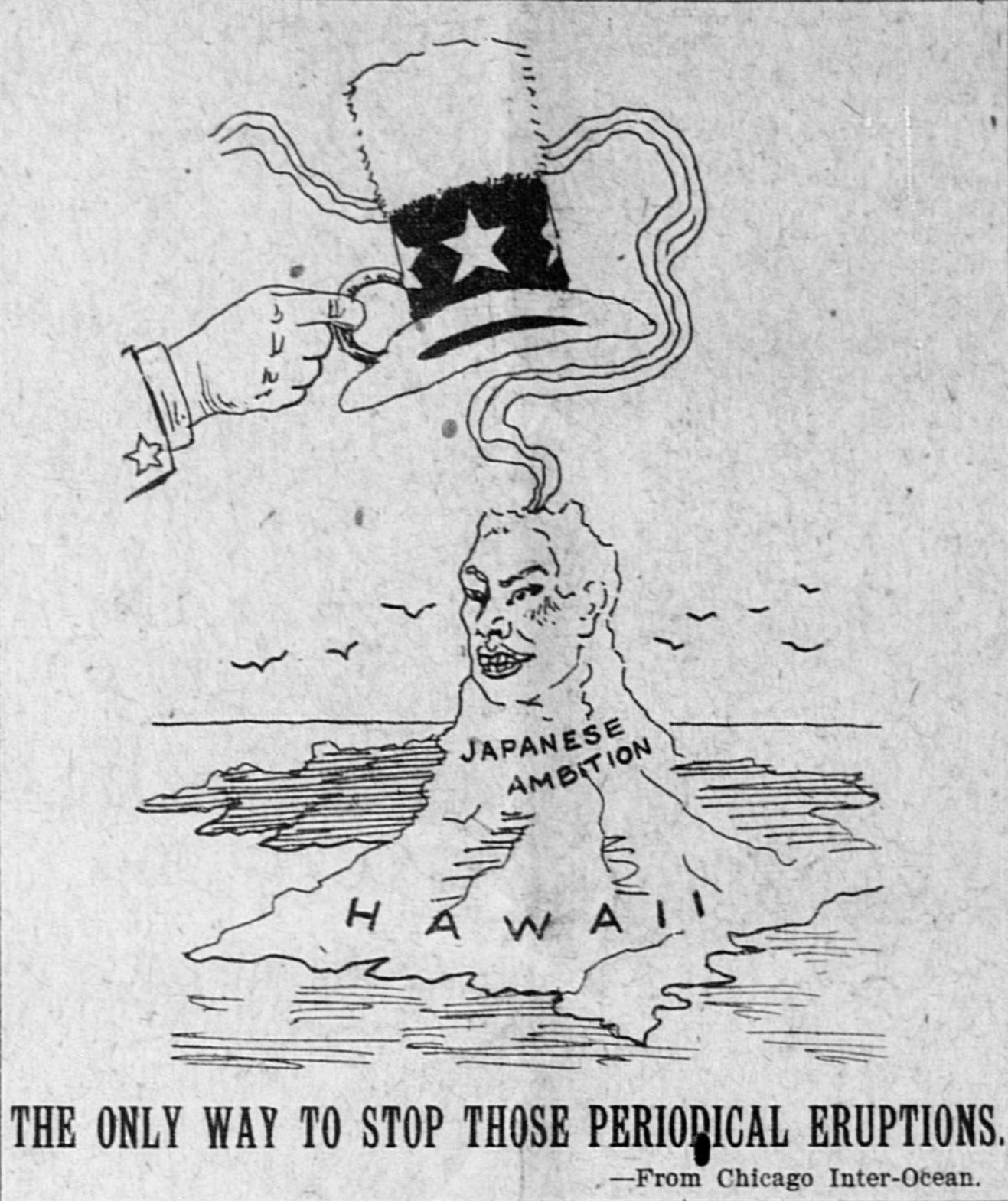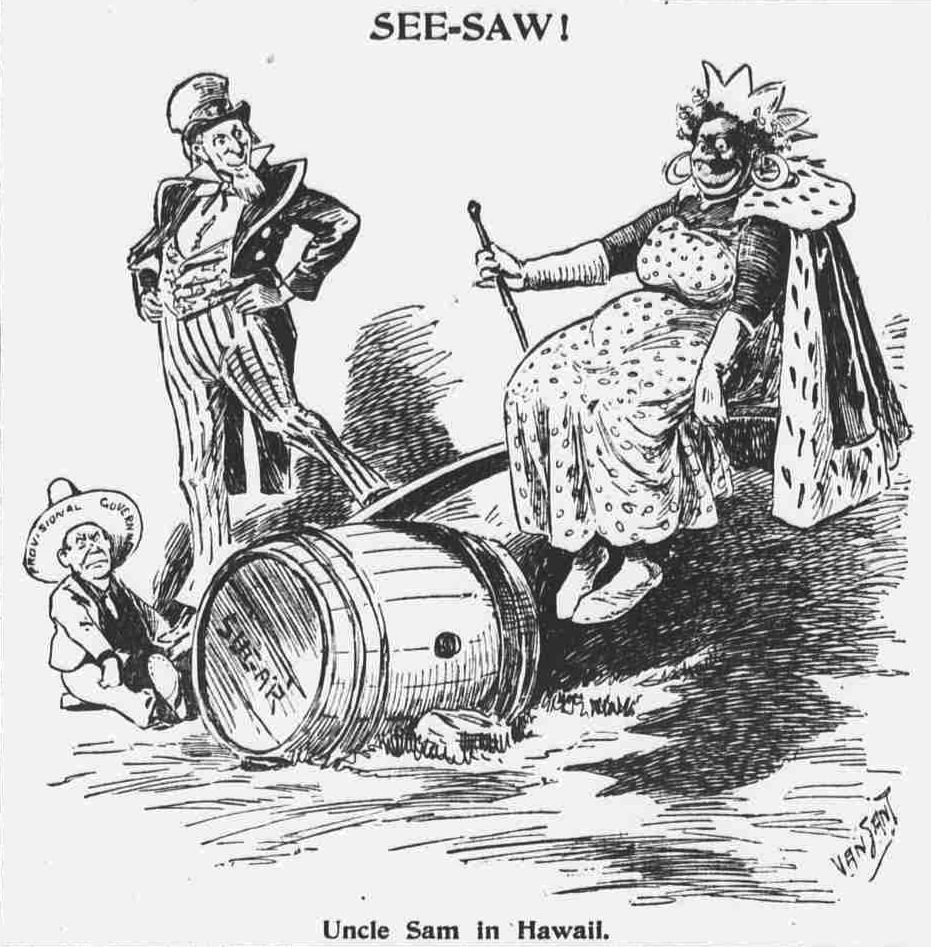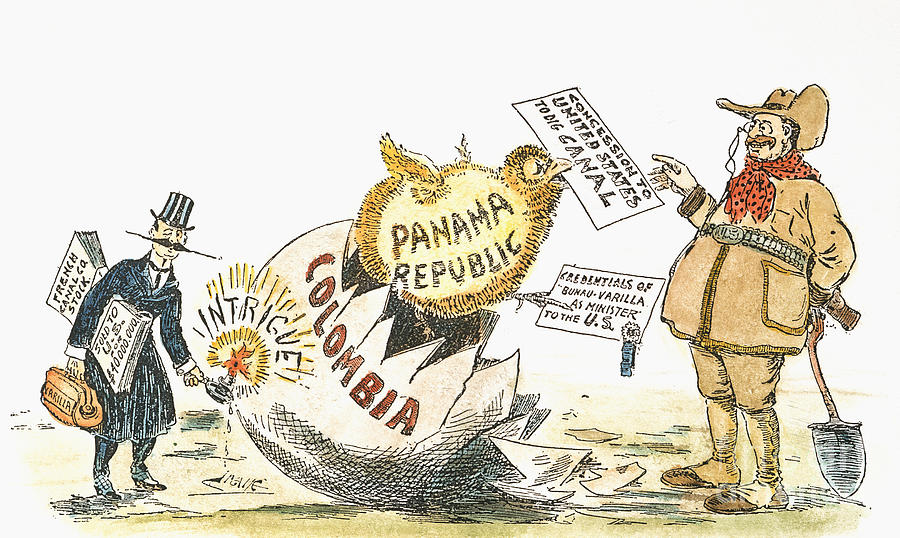"Historical Political Cartoons About Hawaii - Hawai'i Digital Newspaper Project." Historical Political Cartoons About Hawaii - Hawai'i Digital Newspaper Project. N.p., n.d. Web. 8 Feb. 2016. <https://sites.google.com/a/hawaii.edu/ndnp-hawaii/Home/historical-feature-articles/political-cartoons>.
Monday, February 22, 2016
The Annexation of Hawaii
In 1890, Japan was thinking about countries to colonize. The cartoon shows America's desire to annex Hawaii before Japan does by "putting a lid" on Japan's ambitions. In this political cartoon, labeling and symbolism are used. Labeling is used on the volcano. Symbolism is showing how America "put a lid on Japan's ambitions because the United States wanted the land. This cartoon supports my view because it shows how the U.S. only wants the U.S. to have land.
The Annexation of Hawaii
The United States of America wanted more territory do they overthrew the queen of Hawaii. Hawaii was then annexed by the United States. The cartoonist is showing how Uncle Sam seems to be greater than Queen Liliuokalani. It also shows that the U.S. was seeking for money because of the sugar plantations in Hawaii. The techniques used are labeling and exaggeration. This cartoon supports my position because the United States is only looking for ways to gather more materials.
"Historical Political Cartoons About Hawaii - Hawai'i Digital Newspaper Project." Historical Political Cartoons About Hawaii - Hawai'i Digital Newspaper Project. N.p., n.d. Web. 8 Feb. 2016. <https://sites.google.com/a/hawaii.edu/ndnp-hawaii/Home/historical-feature-articles/political-cartoons>.
The Roosevelt Corollary
The Roosevelt Corollary allowed the United States to intervene in the Americas when necessary. The message of this political cartoon is that America is the world's policeman. Techniques used are analogy, exaggeration, and labeling. The analogy used is that America is the world's policeman. Exaggeration is making Roosevelt much bigger than everybody else. The labeling used is on hats, papers, and to label the United States. This supports my position on imperialism because it shows how the United States involves itself in everything when we should not be involved.
"Imperialism Graphics Review." Imperialism Graphics Review. N.p., n.d. Web. 8 Feb. 2016. <http://www.mrvanduyne.com/imperialism/graphicreview.htm>.
The Spanish-American War
In 1898, America went to war with Spain to fight for Cuban freedom. In this cartoon, Uncle Sam is bringing ships to Cuba to help fight for their freedom. However, later on, the Treaty of Paris the former Spanish colonies Cuba, Guam, Puerto Rico, and Philippines would all become under control under the United States. The techniques used in this cartoon are symbolism and labeling. The symbolism used is Uncle Sam pulling boats to Cuba. Labeling is used in the cloud and to show Havana, Cuba.
"History: Spanish American War." History: Spanish American War. N.p., n.d. Web. 8 Feb. 2016. <http://fabbsabs.blogspot.com/2014/12/spanish-american-war.html>.
The Open Door Policy
This cartoon is showing the Open Door Policy. In this policy, U.S. secretary of State John Hay stated that everyone gets an equal trade with China, whether if they have a sphere of influence or not. This is showing America's imperialism at its peak. Uncle Sam is holding the key to China. The cartoonist uses symbolism and labeling as techniques. Symbolism is used by making Uncle Sam bigger than everybody else. It is also used by representing China with now an actual door that is open. Labeling is used on the key and on the door that leads to China. This supports my position by showing that the U.S. involves themselves in policies on the other side of the world, when it shouldn't concern them.
"Christopher Martell on Social Studies and Education: The Open Door Policy, Boxer Uprising, and U.S. Imperialism." Christopher Martell on Social Studies and Education: The Open Door Policy, Boxer Uprising, and U.S. Imperialism. N.p., n.d. Web. 8 Feb. 2016. <http://christophermartell.blogspot.com/2013/06/the-open-door-policy-boxer-uprising-and.html>.
The Panama Canal
As the United States economy grew, the need to have easy access to the Pacific Ocean was necessary. United States leaders then proposed to build a canal to connect the Pacific and Atlantic Ocean. The message of this cartoon is that the "hatching" of Panama from Colombia was a set up for the people of Panama to instantly give the U.S. concessions. Techniques that the Artist used is labeling and symbolism. The egg, chicken, posters, and bag are all labeled in this political cartoon. The symbolism in this cartoon is that Panama is "hatching" and breaking away from Colombia's rule. This supports my position on American imperialism because Theodore Roosevelt is trying to destabilize Colombia and supporting the people of Panama's revolt against Colombia.
"Almanac of Theodore Roosevelt - Panama Canal - Political Cartoons." Almanac of Theodore Roosevelt - Panama Canal - Political Cartoons. N.p., n.d. Web. 8 Feb. 2016. <http://www.theodore-roosevelt.com/toonsbytopicpanamacanal.html>.
The Purchase of Alaska
In 1867, William Seward arranged the purchase of Alaska. He was criticized for spending $7.2 million to purchase Alaska from Russia. The cartoonists message on this is that the purchase of Alaska was a waste of money. The cartoonist uses symbolism and labeling. Symbolism is represented because when Seward made the purchase, newspapers called Alaska Seward's icebox or Seward's folly because they thought it was a waste of money. Labeling is used here by the wagon that says treaty. This supports my view on American imperialism because it is showing the purchase of Alaska in a negative way, such as representing it as a block of ice.
Fine Art America. N.p., n.d. Web. 8 Feb. 2016. <http://fineartamerica.com/products/alaska-purchase-cartoon-granger-tote-bag- 18-18.html>.
The Panama Canal
As the United States economy
grew, the need to have easy access to the Pacific Ocean was necessary. United
States leaders then proposed to build a canal to connect the Pacific and
Atlantic Ocean. Theodore Roosevelt wanted this to be created so badly that he
would not let anything get in his way. Many people could interpret this
political cartoon in a negative way. I interpreted this cartoon as though he is
scooping out the Columbians that could stop him from building the Panama
Canal. He is ignoring Colombia's sovereignty and is supporting the Panamanian
revolution against Colombian rule. The artist of this political cartoon uses
analogy and labeling as techniques. The analogy in the cartoon is comparing
Theodore Roosevelt to a "man who can make dirt fly" or in other
words, a construction worker. Labeling is used on the shovel Roosevelt is
holding, banners the people are holding, and around where he is digging for the
Panama Canal. This cartoon supports my position by showing Theodore
Roosevelt in a negative way. He is helping the people of Panama revolt
against Cuban rule so he can get the canal that he wants to build.
"American Experience." PBS. PBS, n.d. Web. 8 Feb. 2016. <http://www.pbs.org/wgbh/americanexperience/features/teachers-resources/panama-guide/>.
Subscribe to:
Comments (Atom)







